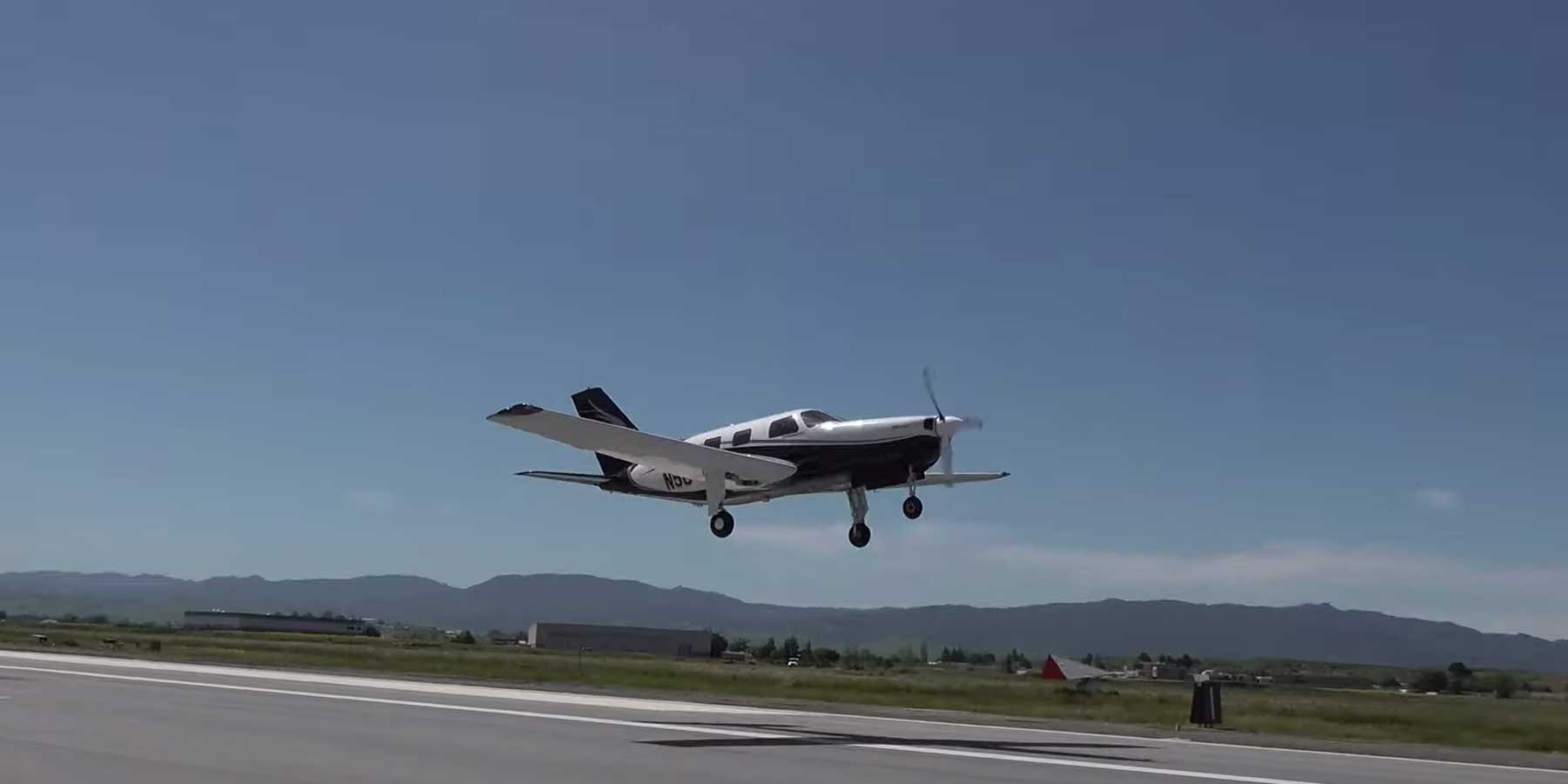Click Here to View This Page on Production Frontend
Click Here to Export Node Content
Click Here to View Printer-Friendly Version (Raw Backend)
Note: front-end display has links to styled print versions.
Content Node ID: 418658
Hydrogen fuel cell propulsion pioneer ZeroAvia this week conducted the first flight with an early version of its powertrain in a six-seat Piper M-Class aircraft. The flight, which used electric batteries, was made on June 23 from Cranfield University’s airfield in the UK where it is working on the government-backed HyFlyer program to advance zero-emissions aviation.
According to California-based ZeroAvia, the flight was the first made in the UK involving what it defined as a “commercial-scale” aircraft powered by electric batteries. The company says it intends to have a 10- to 20-seat aircraft certified with hydrogen propulsion within three years, and a 50- to 100-seat model by 2030. By 2040, it believes it could be possible for aircraft carrying 200 passengers to make flights of more than 3,000 nm.
For the HyFlyer flight trials, the Piper’s single piston engine will be replaced by a powertrain consisting of electric motors, hydrogen fuel cells, and gas storage. According to ZeroAvia, this combination offers a significantly more efficient energy-to-weight ratio than battery-based all-electric propulsion and will make commercial operations viable more quickly in larger aircraft than the numerous small eVTOL models now in development.
Later this summer, ZeroAvia intends to make a flight of almost 300 nm from the Orkney islands in the north of Scotland to a city on the mainland. This is where the company’s partner EMEC Hydrogen is based and where it is working on infrastructure to use renewable energy to produce so-called green hydrogen to fuel aircraft.
ZeroAvia believes that by 2023 it could have a hydrogen-powered aircraft ready to start commercial operations carrying up to 20 passengers on trips of up to around 500 nm. It says that operating costs will be lower than for an all-electric aircraft, in part because the technology does not require batteries to be replaced.
The HyFlyer program is supported by the UK government’s Innovate UK and Aerospace Technology Institute research and technology projects. Its aim is to replace conventional propeller engines in medium-sized passenger aircraft for regional airline operations.
ZeroAvia started some test flights with the re-engined Piper M-class aircraft in California during 2019. It is also partnered with Intelligent Energy, which is adapting its evaporatively-cooled fuel cell technology for aviation use.
[This story was updated on September 25 to clarify that the June 23 flight was powered by electric batteries, based on further information released at a later date by Zero Avia].
